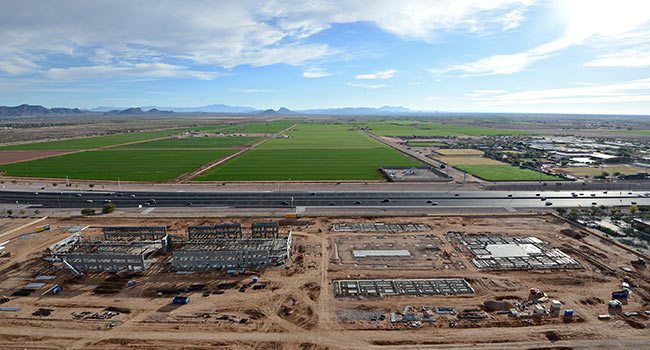Developing on tribal land can be a complex process with many moving parts.
Developers will have to work with the federal government, its (slow) speed, regulations and the rules and laws of the tribe to make something happen.
Pilar Thomas, of counsel at Lewis Roca Rothgerber Christie’s tribal lands practice group, says there are exceptional development opportunities on tribal lands, and developers should be patient, persistent, flexible, respectful and fair.
So, what are some things you should know when developing on tribal lands?
To get to the bottom of that question, AZRE spoke with the tribal land use attorneys at Lewis Roca Rothgerber Christie, Pilar Thomas and Frances R. Sjoberg to see what developers should know when developing on tribal lands.
1. Understand the tribe’s internal laws and processes for land development
Developers should understand how decisions are made at the tribe, what laws and procedures are in place for land development and if there are any taxes or regulations associated with the potential development. Federal and state law may be implicated for a development, depending on the type and scale of the project, Thomas explains, and tribal laws will always be applicable.
2. Don’t be worried about sovereign immunity
Developers who are new to working with tribes usually have an outsized fear of sovereign immunity, Sjoberg says. Or developers are concerned a tribe will use its sovereign immunity to shield itself from contractual obligations. Tribes are generally reasonable about requests for an appropriate waiver of sovereign immunity, Sjoberg adds. These waivers can be tailored to protect a developer’s interests without opening the door to a tribe’s treasury.
3. Patience is key
Some tribes have limited resources, which can keep tribes from negotiating quickly. Tribal communities take a deliberate approach with developments and the use of land and natural resources. Thomas says this should not be interpreted as incompetence or lack of capability.
4. Get to know the tribe
In order to have a successful project, developers should get to know the tribe, research it and its history, the community and get an understanding of the tribe’s values and goals, Thomas says. Tribes are sovereign nations with governments and government officials, so it’s important to build these relationships and be respectful.
5. Reach out to the leaders
Engage with key tribal leaders within the tribe, and have them work to champion the project, Thomas says. Work with the chairman, president, governor, chief and other council members to ensure success.
6. Work together
Projects generally require compliance with federal laws, Sjoberg says. So, it’s important to join forces with the tribe to resolve non-tribal requirements to move the development through the federal process.




